Many achievements, many challenges
After more than a decade of implementing Resolution 29-NQ/TW, our country's education and training has achieved many encouraging results. The new general education program was issued in the direction of developing learners' capacity and qualities; teaching and assessment methods were innovated according to output standards.
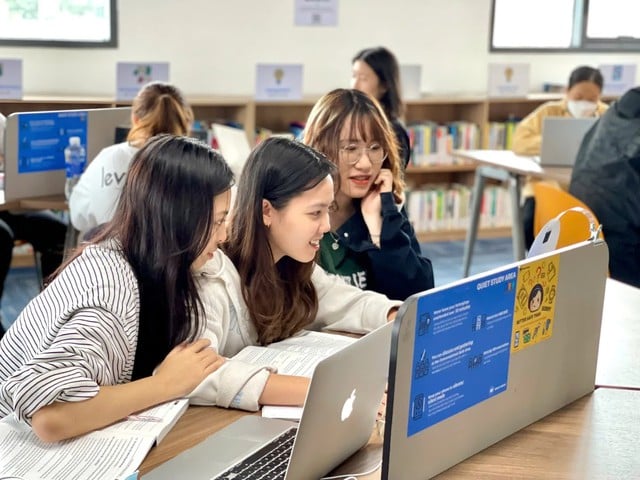
University education needs to prioritize practice, critical thinking, creativity, digital skills and soft skills.
Photo: My Quyen
In higher education, the revised Law on Higher Education (2018) and the autonomy policy have created a breakthrough in mechanisms. Many schools have proactively opened new majors and adjusted their programs according to social needs. Accreditation and ranking work has been promoted. The 2021-2030 university education planning project sets a target of over 3 million students, 35% of whom will study STEM, and the formation of high-quality training and research centers. Many Vietnamese universities have improved their international rankings, showing an increase in training quality.
The State maintains budget priority for education: Resolution 29-NQ/TW requires at least 20% of total budget expenditure for education; Resolution 71-NQ/TW specifies at least 3% for university education, with a scholarship fund for talented students and support for poor students.
However, the education system still has many limitations. The quality of educational institutions is uneven; many small schools lack facilities and have outdated curricula; the teaching staff is both insufficient and weak. Active teaching methods are not yet popular; scientific research by students is still formal and not closely related to reality. The gap between training and labor market needs is still large. Many graduates cannot find suitable jobs or have to work in fields other than their major; vocational skills, digital skills and soft skills are still limited.
Regarding equity and lifelong learning, the gap between urban and rural areas, remote areas is still large. Tuition fees are increasing rapidly while support policies are not enough. Digital transformation in education is still lacking in synchronization. Many facilities do not have a clear strategy; information technology infrastructure and digital platforms are weak and scattered; LMS and MOOCs systems have been deployed but not exploited effectively. The digital capacity of lecturers is uneven, students are not well prepared for online learning.
The Industrial Revolution 4.0 with AI, IoT, big data, blockchain is having a profound impact on production, management and learning. The modern labor market requires human resources with good expertise, digital skills, creative thinking and the ability to learn for life. Vietnam needs to take advantage of technological opportunities to develop education and human resources. Deep integration creates competitive pressure for high-quality human resources. Participation in free trade agreements and the ASEAN community opens up opportunities for cross-border work, requiring students to meet international standards in terms of profession, foreign language and cultural understanding.

The new general education program focuses on developing learners' abilities and qualities.
Photo: Dao Ngoc Thach
The orientation of digital economic development also poses urgent requirements for education. Decision 131/QD-TTg (2022) on digital transformation in education sets the target that by 2025, 50% of students and teachers will be eligible for online learning; online learning platforms will be widely used; 100% of educational institutions will apply data management. By 2030, almost the entire education system will be put into the digital environment; about 30% of universities will become digital universities; 100% of programs will be managed online. These major goals require comprehensive changes in thinking, management, teaching, programs, investment mechanisms and socialization.
Need solutions to boost Vietnamese education
Based on the new reality and context, I propose that the Draft Documents of the 14th National Party Congress acknowledge and specify a number of groups of solutions to fundamentally and comprehensively innovate education and training, improve the quality of human resources and develop people.
Firstly , perfecting institutions and management mechanisms. The National Assembly and the Government need to concretize Resolution 71-NQ/TW with a system of appropriate laws, decrees, and circulars; speed up the promulgation of fundamental laws such as the Law on Digital Education, the Law on Digital Transformation, the Law on Lifelong Learning, creating a legal corridor for open, flexible, and digitalized education.
It is necessary to continue to improve the university autonomy mechanism associated with accountability and quality control; build an independent and public monitoring mechanism; expand autonomy for non-public schools to create a healthy competitive environment. Some key universities need to be invested in to develop into regional research universities. Build an open database on training quality and post-graduation employment so that schools can adjust their programs and improve the quality of human resources.
Second , improve the quality of training programs and teaching methods. University education needs to strongly shift to developing learners' capacity, prioritizing practice, critical thinking, creativity, digital skills and soft skills. Training programs must closely follow output standards associated with career requirements in the context of integration and digital transformation. Linking training with practice and reality needs to be emphasized through increasing internship time, inviting experts and entrepreneurs to participate in teaching, and organizing practical projects. Develop a team of lecturers with high professional qualifications and good digital skills; encourage students to do scientific research and start-ups; form a venture capital fund in the school.
Third , enhance digital transformation and develop a digital learning ecosystem. Priority should be given to investment in internet infrastructure, data centers, LMS systems, MOOCs and AI platforms. Digital capacity for lecturers and students must be focused on. Educational institutions need to apply a blended learning model, using AI and learning data to personalize learning. It is necessary to develop a digital learning resource warehouse and free digital textbooks. Ensure information security, protect personal data, prevent fraud, respect copyright and build a digital culture of behavior.
Fourth , linking education with the labor market, research and innovation. The link between schools and businesses must be strengthened through the business advisory council at the faculty, businesses participating in program development, evaluating output standards, sponsoring scholarships, and placing research orders. It is necessary to expand paid internships and early recruitment for final year students. Establish innovation centers and business incubators at schools, cooperate with investment funds and banks to support start-up capital. The State needs to increase investment in applied research and technology transfer. Forecasting human resource needs by industry and region must be done regularly to adjust training accordingly.
Fifth , ensure equity, inclusion and promote lifelong learning. It is necessary to expand financial support policies, student loans, scholarships for talented people, support for disadvantaged areas, students with disabilities, ethnic minority students, and gender equality policies. Develop a cumulative credit system, recognize learning outcomes from multiple sources; strengthen community education facilities and lifelong learning centers. Narrowing regional gaps should be prioritized through investment in facilities, digital infrastructure, teacher training for disadvantaged areas and expansion of online learning programs.
Sixth , develop culture, ethics, identity and social responsibility in education. It is necessary to strengthen education on ideals, ethics, culture and national traditions; organize extracurricular activities and historical experiences to foster a spirit of dedication. The school environment is democratic and humane, encouraging dialogue and scientific debate. Focus on education on life skills, mental health and legal awareness.
To meet the demands of the new era, Vietnamese education needs to continue to innovate more strongly and synchronously. When the state, schools, businesses and society join hands, education and training will become a solid foundation for the country to break through and realize the aspiration for prosperous and sustainable development.
Source: https://thanhnien.vn/niem-tin-gui-dang-dot-pha-giao-duc-de-vung-buoc-vao-ky-nguyen-so-185251116173311081.htm








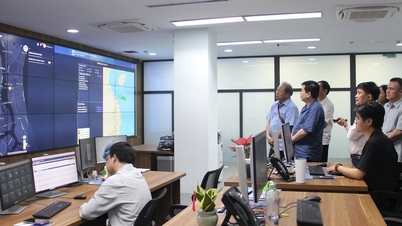



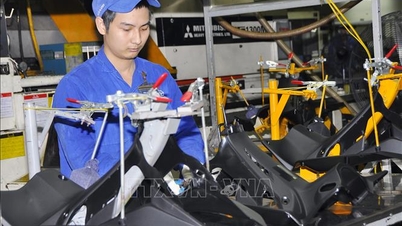






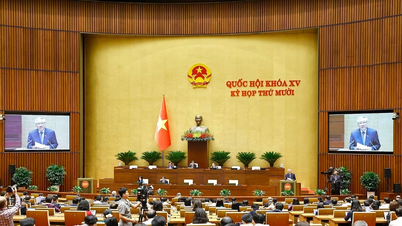


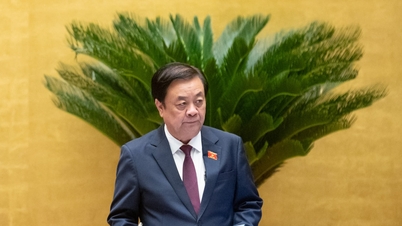

























































































Comment (0)